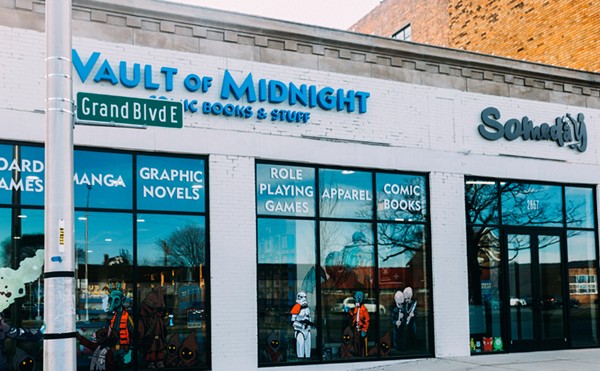If you walk through the high brick archway that serves as the entrance to the crafts area at Dearborn’s Greenfield Village, the long red-brick building in the distance looks as it has since it was built in 1930 — a working glass plant with five or six glassblowers creating early American-style glassware. But when the crafts area closed for the winter in January, a massive project began on the building’s interior. Three million dollars went into expanding the space, doubling the furnaces, adding new equipment and laying out a parquet mesquite floor, making it just about the most breathtaking glass shop in the country.
It is a little too easy to be amazed at what money can do. If bigger is better, the old Cape Cod-looking glass plant was the worst, although it had an atmosphere that this new space can’t quite capture. But on a recent Sunday, Venetian glass master Elio Quarisa spent the day making exquisite art. And when a maestro sits at the gaffer’s bench, working molten glass into a goblet, its lacey stem wound with a snarling dragon, the building begins to make sense. This is where an art form can be saved and an ancient practice can continue, which is worth some money. It might seem odd to have an authentic Italian glass maestro at Greenfield Village — Henry Ford’s Disneyesque version of American ingenuity. But this museum has recognized the popularity of the glass shop and has poured money into its future. Students who came to watch Quarisa crowded around him coiled like a spring, eager to leap into action if he needed help.
Maybe the Henry Ford does not even know what it has done in expanding the glass shop, encouraging tourists and increasing production and sales of glass. Greenfield Village deems itself “America’s Greatest History Attraction.” But history isn’t over and done — it’s ongoing, with Saturday evening visits from local glass artists this summer.
Mary Eldridge is a freelance writer. Send comments to [email protected]




